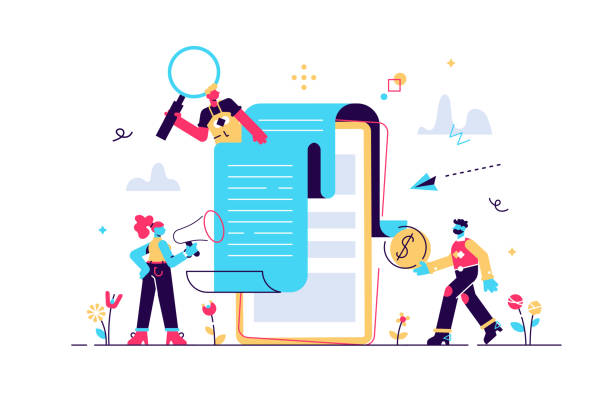The Importance of Entering the Multilingual Web World

In the current era, where geographical boundaries have blurred in the digital world, #multilingual website design# is no longer a luxury choice but a strategic necessity for any business aspiring to conquer #global markets#.
With increasing internet access worldwide, millions of users from diverse languages and cultures are searching for services and products.
A single-language website misses many of these potential opportunities.
Multilingual web design enables businesses to connect with a wider audience, build their trust, and ultimately expand their market share.
This approach not only increases visitors but can also significantly improve conversion rates, as users are more inclined to purchase or use services offered in their native language.
Investing in multilingual site development means investing in the future and sustainability of your business in a global competition.
Falling behind in the competition with large online stores?
Rasaweb brings your business online with professional e-commerce website design, increasing your market share!
✅ Enhance brand credibility and customer trust
✅ Easy shopping experience leads to more sales
⚡ Take action now to receive a free website design consultation!
The Undeniable Advantages of Global Websites
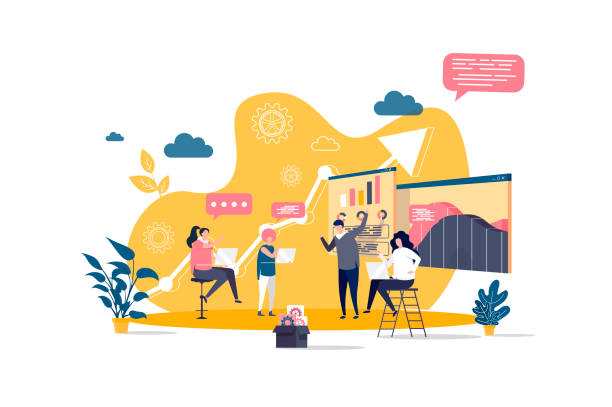
Multilingual websites go beyond mere content translation; they open a gateway to countless international opportunities.
One of the most significant advantages of this approach is Search Engine Optimization (SEO) for local markets.
By having different versions of the site for various languages, the chance of appearing in local user search results significantly increases.
This is due to the adaptation to specific keywords and search phrases of each geographical and cultural region.
The second advantage is increased credibility and trust.
When a website provides its content in the user’s native language, a sense of respect and customer care is conveyed, which greatly helps in strengthening the brand and customer loyalty.
The third advantage is access to new markets.
Many businesses, by implementing multilingual site design, gain access to countries and regions they previously couldn’t even imagine.
This expansion of reach brings a very high potential for revenue growth and can open new avenues for e-commerce and online services.
Ultimately, creating a multilingual website improves your business’s competitiveness at an international level.
Planning and Infrastructure in Multilingual Website Design
![]()
Success in implementing multilingual site design depends on meticulous planning and selecting appropriate infrastructure.
Before any action, you must identify target languages and assess the need for localized content.
Is mere text translation sufficient, or do you need to change images, date and currency formats, and even color schemes to attract local audiences? Choosing a Content Management System (CMS) is one of the most crucial decisions.
CMSs like WordPress (with plugins such as WPML), Drupal, or Joomla offer multilingual capabilities, but each has its own requirements and complexities.
You must ensure that the chosen CMS supports UTF-8 to correctly display characters from all different languages.
Furthermore, the URL structure for different languages is also important; using subdomains (fa.example.com), subfolders (example.com/fa/), or separate domains (example.ir) each has its own advantages and disadvantages from an SEO perspective.
This stage is the cornerstone of multilingual web architecture, and precision at this point prevents serious issues from arising in the future.
Comparison of Multilingual URL Structure Approaches
| Approach | Advantages | Disadvantages | SEO Recommendation |
|---|---|---|---|
| Subfolders (example.com/fa/) | Simple to implement, transfers authority from the main domain. | Limitations in distinct hosting, may appear less local. | Very good (preferred by Google) |
| Subdomains (fa.example.com) | Independent hosting, easy for Geo-targeting management. | Requires separate SSL certificate, may transfer less authority from the main domain. | Good |
| Top-level domains (example.ir) | Highly local, high trust in a specific region. | Costly, requires separate management and SEO for each domain. | Excellent for precise regional targeting |
Technical Aspects and Implementation of Multilingual Web Design

The technical implementation of multilingual web design involves choosing the right approach for content translation and delivery.
There are two main methods: manual translation and machine translation.
Manual translation is essential for core and strategic site content that requires high accuracy and appropriate tone.
In contrast, machine translation (using tools like Google Translate) can be useful for a large volume of non-critical content or for providing a general idea to the user, but it never replaces the quality of human translation.
Using JavaScript frameworks and libraries like React Intl or i18next can facilitate the internationalization process in single-page applications (SPAs).
These tools allow for managing translation strings, and formatting dates, times, and numbers based on the user’s locale.
Furthermore, developers must pay special attention to font loading for different languages and right-to-left (RTL) support for languages like Persian and Arabic.
Multilingual web development requires specialized skills and a deep understanding of software architecture to ensure a seamless and flawless user experience across all languages.
Are you tired of your company’s website failing to meet your expectations? With Rasaweb, design a professional website that truly represents your business’s image.
✅ Increase attraction of new customers and sales leads
✅ Boost your brand’s credibility and trust among your audience
⚡ Get a free website design consultation!
The Art of Localization Beyond Translation
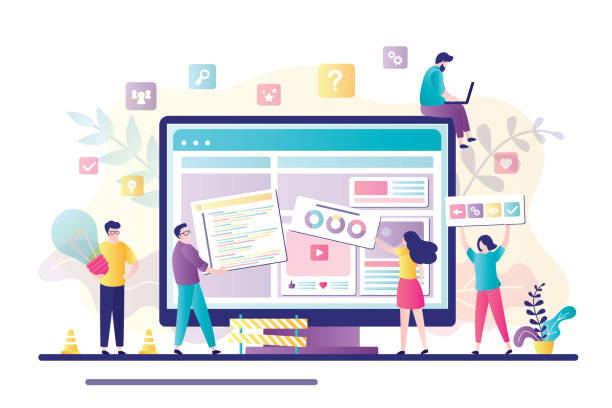
Localization goes beyond simple translation; this process means fully adapting content and user experience to the culture, customs, and expectations of local audiences.
For example, an image or symbol that has a positive meaning in one culture might be misunderstood or even offensive in another.
Localization includes changes in currency, date and time formats, measurement systems, images, colors, and even the tone of writing.
The goal of localization in multilingual portal design is to create a sense of familiarity and comfort for the user, as if the website was originally designed for them, in their own language and culture.
This is especially crucial in sensitive and traditional markets.
Training content teams and designers on the importance of cultural differences and their impact on user experience, is a vital step in this direction.
A successful multilingual website is one whose content is not only translated but also imbued with a local spirit, to establish a deep and meaningful connection with its audience and evoke a sense of loyalty in them.
SEO Strategies for Multilingual Websites
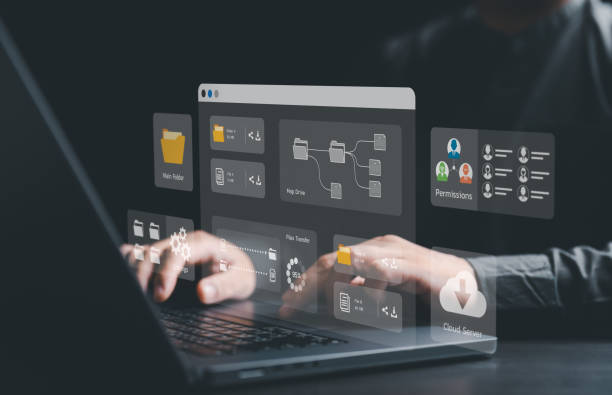
Search Engine Optimization (SEO) for multilingual websites is slightly more complex than for single-language sites, but by adhering to correct principles, brilliant results can be achieved.
The most important factor is the correct use of the hreflang tag.
This tag informs search engines like Google that different versions of a page exist for various languages or regions, preventing duplicate content.
Correct hreflang implementation ensures that users are directed to the appropriate language and region version in search results.
Additionally, keyword research should be conducted separately for each language and target market, as keywords and search phrases may have different meanings and popularity in different languages.
The URL structure, mentioned in the previous section, also plays a crucial role in SEO.
Each language should have its unique URL, and URLs with too many parameters (like example.com?lang=fa) should be avoided.
Using multilingual sitemaps that include all language versions helps search engines better understand the site’s structure.
This analytical and technical approach in multilingual website design is the key to success in achieving high rankings in search engines and attracting organic traffic.
User Experience and Design Challenges in International Websites

User Interface (UI) and User Experience (UX) design in international websites faces unique challenges.
One of the most important issues is the space required for text.
A text that is short in English might become much longer in German or Persian, leading to layout disruption.
Designers must consider the necessary flexibility in design to accommodate these dimensional changes.
Furthermore, the placement of the language switcher and its display method are very important.
Should it be in the header, footer, or both? Should it be a dropdown menu or country flags? (Using country flags is not recommended, as a flag does not represent a specific language; for example, Spanish is spoken in several countries).
Text direction (RTL/LTR) is also a major challenge that requires precision in design and coding to ensure all elements are displayed correctly from right-to-left or left-to-right.
Implementing international sites also requires attention to accessibility features for different users with specific needs in various languages.
Is the user experience equally smooth and efficient across all languages? This is a fundamental question that designers must answer.
Key Elements in Multilingual Website UX Design
| UX Element | Multilingual Challenge | Solution |
|---|---|---|
| Text Placement | Variable text length between languages | Use flexible design (Fluid Layouts), sufficient space for texts |
| Language Selection | Improper placement, icon, and naming of the switcher | Use language names (not flags), prominent and accessible location |
| Page Direction (RTL/LTR) | Issue in displaying elements for right-to-left languages | Standard CSS design and coding for both directions |
| Images and Icons | Cultural differences in image interpretation | Localize images, use international icons |
Measuring Success and Analyzing Multilingual Website Performance
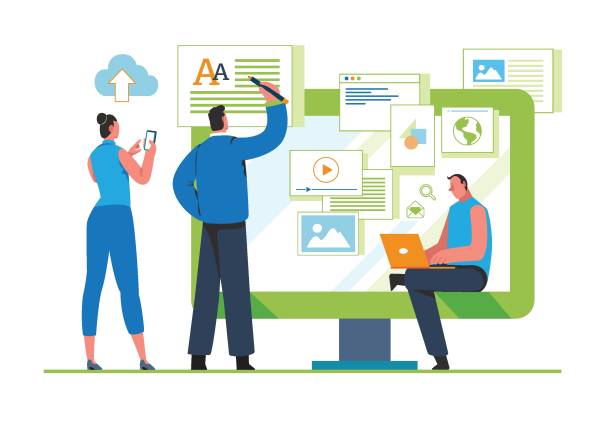
After implementing multilingual website design, the critical stage of performance measurement and data analysis begins.
Tools like Google Analytics allow tracking users based on language and geographical region.
This data helps you understand which language versions attract the most traffic, what the bounce rate is for each language, and which pages need improvement.
Monitoring the conversion rate for each language is crucial; a particular language might have high traffic but a low conversion rate, indicating potential issues in localization or user experience for that version.
Through user behavior reports, you can identify specific patterns for each language group and optimize content and design accordingly.
Furthermore, surveying users in different languages and receiving direct feedback is a valuable source for continuous improvement.
These analyses not only help you maximize your investment in multilingual web design but also provide valuable insights into international target markets.
Do you know that your customers’ first impression of your company is your website? With a powerful corporate site from Rasaweb, multiply your business’s credibility!
✅ Exclusive and eye-catching design tailored to your brand
✅ Improved user experience and increased customer acquisition
⚡ Get a free consultation!
Common Errors in Implementation and Solutions

Despite numerous advantages, multilingual website design can come with common challenges and errors that, if ignored, can lead to negative results.
One common mistake is word-for-word translation and lack of cultural localization, which results in inappropriate or even offensive content.
The solution is to use native translators and localization specialists.
Another error is neglecting multilingual SEO and incorrect use of the hreflang tag, which leads to loss of search engine rankings for different language versions.
For this purpose, regular SEO review and ensuring correct implementation of language tags are essential.
Also, many websites do not implement the language switcher correctly or place it in an inaccessible location, which confuses the user.
Ensuring a clear and user-friendly placement of the language switcher is vital.
Lack of planning for technical and content support after launch is also a common problem; a multilingual website requires continuous maintenance and content updates in all languages.
Awareness of these issues and having a comprehensive plan to address them ensures the success of multilingual website creation projects and prevents resource wastage.
The Future of Multilingual Websites and New Trends

The future of multilingual website design is rapidly evolving, with new trends emerging that further personalize the user experience.
Artificial Intelligence (AI) and Machine Learning (ML) will play an increasing role in translation and localization; although they cannot yet fully replace the precision and nuance of human translation, they are rapidly improving.
These technologies can be highly beneficial for automatic translation of user-generated content or dynamic content.
Furthermore, multilingual voice search and the need to optimize content for these types of searches will become one of the most significant challenges ahead.
With the proliferation of smart devices and voice assistants, more users are seeking information in their native language via voice commands.
Augmented Reality (AR) and Virtual Reality (VR) can also elevate the multilingual user experience to new levels in the future, allowing users to interact with content in their own language within virtual environments.
These trends indicate that multilingual website design is not just a current necessity but an investment for a future where global communication without language barriers will become even more prevalent.
Frequently Asked Questions
| Question | Answer |
|---|---|
| What is a multilingual website? | It is a website whose content is available to users in several different languages. |
| Why should we design a multilingual website? | To expand access to international audiences, increase website traffic, improve SEO in target markets, and provide a better user experience for non-Persian speaking users. |
| What are the main methods for implementing a multilingual website? | Using subdomains (e.g., en.mysite.com), using subdirectories (e.g., mysite.com/en/), and using separate domains for each language (e.g., mysite.com and mysite.de). |
| Which implementation method is better for SEO? | Generally, using subdirectories (language folders) is often recommended due to the transfer of authority from the main domain to other languages. |
| What is the Hreflang tag and what is its use? | It is an HTML tag or HTTP Header that informs search engines which version of a page is suitable for which language or geographical region. This tag prevents duplicate content and improves SEO. |
| How is a Language Switcher designed? | Usually by using a dropdown menu, button, or flag in the website’s header or footer, which allows the user to select their desired language. |
| Is automatic (machine) translation suitable for a multilingual website? | No, machine translation usually has low quality and many errors that can harm the website’s credibility. Human translation or a combination of human translation and machine editing is recommended. |
| What are the most important SEO tips in multilingual website design? | Correct use of the Hreflang tag, having an appropriate URL structure for each language, translating meta titles and descriptions, translating core content, and internal linking between related language versions. |
| Should all website content be translated? | It depends on the strategy. Typically, the main and important content of the site should be translated. Less important sections or the blog may not require full translation. |
| What are the main challenges in multilingual website design? | Managing content in different languages, translation costs, technical issues related to URLs and language tags, template compatibility with right-to-left (RTL) languages like Persian and Arabic, and managing multilingual SEO. |
And other advertising services by Rasaweb Advertising Agency in the field of advertising
Choosing the right background for home appliance ads
How to leverage AI in home appliance ads?
Optimizing ads for young audiences on industrial websites
Ways to increase customer loyalty with home appliance ads
How to use augmented reality in home appliance ads?
And over hundreds of other services in the field of internet advertising, advertising consultation, and organizational solutions
Internet Advertising | Advertising Strategy | Advertorials
🚀 To elevate your business in the digital world, Rasaweb Afarin Digital Marketing Agency, specializing in SEO, online advertising, and custom website design, is your trusted partner.
📍 Tehran, Mirdamad Street, Next to Central Bank, Kazeroon Janoubi Alley, Ramin Alley No. 6

